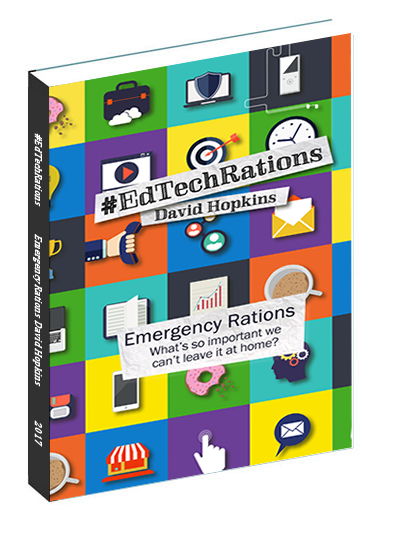2012: ABS Learning & Teaching Conference

Along with Dr Milena Bobeva (@milenabobeva) I will be presenting a follow-up to our January QR Code workshop at the ‘Innovation in challenging times’ – The ABS Learning & Teaching conference.
The poster, “Embedding QR Codes in Education Contexts“, abstract is:
“Enabling a fast, flexible, convenient, and user-friendly way for students to access content and learning materials online is recognised as an important agenda item for educational institutions. In the case of Higher Education (HE) this is becoming all the more important due to the increase in student ownership of advanced mobile technology (smart phones and tablet devices).
“Quick Response (QR) codes are 2-dimensional barcodes introduced in 1994. Over the last five years they have gained they have gained recognition as an effective tool for advertising, marketing, product information and logistics (MGH, 2011). Within the Education sector most common uses include access to web sites with course information and study materials, directions to locations and business cards (Walsh, 2010; Hicks and Sinkinson, 2011). Currently pilots are run on using QR codes in student recruitment (Hilton et al, 2011) and in class assessment (Chen et al, 2011; Susono and Shimomura, 2006).
“Within the Business School at Bournemouth University we are in the second cycle of using QR codes across our programmes. Our observations and experiences confirm Tolliver-Walker’s views (2011) on the importance to focus on the user’s mobile experience with the QR code, rather than simply on the code and its hits.
“This poster presents the outcomes of a study on the student awareness of, and engagement with QR Codes. It also introduces the outcomes of a brainstorming session where HE academic and professional staff explored further areas in which QR codes could add value to the student experience and the processes determining it.”
If you are going to quote or cite this poster in any work please use the following details (in the style of Harvard Referencing):
Bobeva, M. and Hopkins, D., 2012. Embedding QR Codes in Education Contexts. In: Innovation in challenging times: The ABS Learning & Teaching Conference, April 24-25, Manchester Metropolitan University Business School. Available from: http://eprints.bournemouth.ac.uk/19935/.

“Embedding QR Codes in Education Contexts” – Click to enlarge
Research design and methods of data collection:
“The presented data was collected through a student survey at Bournemouth University and a set of brainstorming exercises with staff participating in the HEA workshop on QR codes in HE that took place on the 31 January 2012 in Bournemouth. The survey, taking place in the w/c January 23rd, 2012, is administered to ensure that richer data on experiences and expectations is captured. The data collection instrument is hosted online to allow the researcher to record data immediately through a mobile device. The sample is randomly selected with equal representation from male and female students. The outcomes are compared to similar surveys run by MGH (2011) and Ramsden and Jordan (2009).
“The second data collection method comprises of brainstorming exercises with the participants of the HEA workshop, who had the opportunity to discuss the outcomes of the student survey prior to drawing their suggestions for QR innovations. “
Discussion of implications:
“Through the results of the study we seek to highlight key aspects of student experience with QR codes, to offer suggestions for further educational applications using QR codes and to outline effective uses of QR codes in HE. The data will be scrutinised for any indication of concerns about equitable access, and indicate that alternatives will need to be available when designing a QR code based activity.”
List of references:
Chen, N.-S., Teng, D.l Chia-En., Lee, C.-H., Kinshuk. 2011. Augmenting paper-based reading activity with direct access to digital materials and scaffolded questioning, Computers & Education, Sept 2011, 57(2), 1705-1715.
Ching-yin L.; So, S., 2010. QR codes in education. Journal of Educational Technology Development & Exchange; Oct2010, Vol. 3 Issue 1, p85-100.
MGH, 2011. MGH’s QR Code Usage and Interest Survey, Seybold Report: Analyzing Publishing Technologies, 5/9/2011, 11(9), 13-14.
Hicks, A. and Sinkinson, C., 2011. Situated Questions and Answers: Responding to Library Users with QR Codes, Reference & User Services Quarterly, Fall2011, Vol. 51 Issue 1, p60-69
Hilton, W., Baillie, C. Moran, K., 2011. Using QR Codes Effectively in the Recruitment Process, Recruitment & Retention in Higher Education, 25(11),3.
Ramsden, A. and Jordan, L, 2009. Are students ready for QR codes? Findings from a student survey at the University of Bath. University of Bath, Available from: http://opus.bath.ac.uk/12782/1/qrcodes_student_survey_uniofbath_feb09.pdf [Accessed 20 January 2012].
School Arts, 2011. The Hidden Identity in QR Codes. School Arts, Aug/Sep2011, 111(1),33.
Susono, H.; Shimomura, T., 2006. Using Mobile Phones and QR Codes for Formative Class Assessment, Current Developments in Technology-Assisted Education, (2) 1006-1010.
Tolliver-Walker, H. 2011. Making Best Use of QR Codes: Gleaning Lessons from the Latest Data. Seybold Report: Analyzing Publishing Technologies, 12/12/2011, 11(23), 2-7.
Walsh, A. (2010). QR Codes – using mobile phones to deliver library instruction and help at the point of need, Journal of Information Literacy, 4(1), 55-63.

















